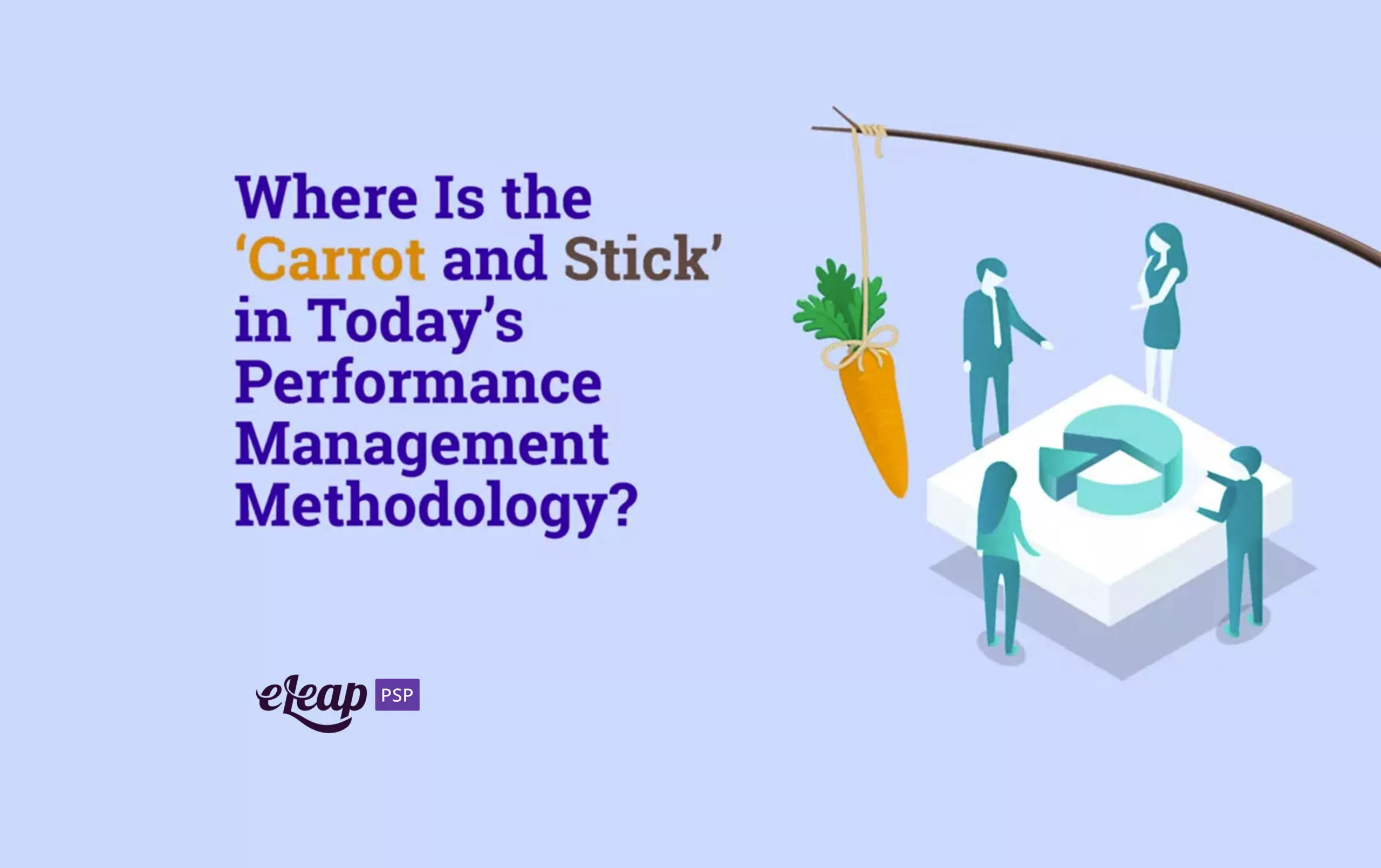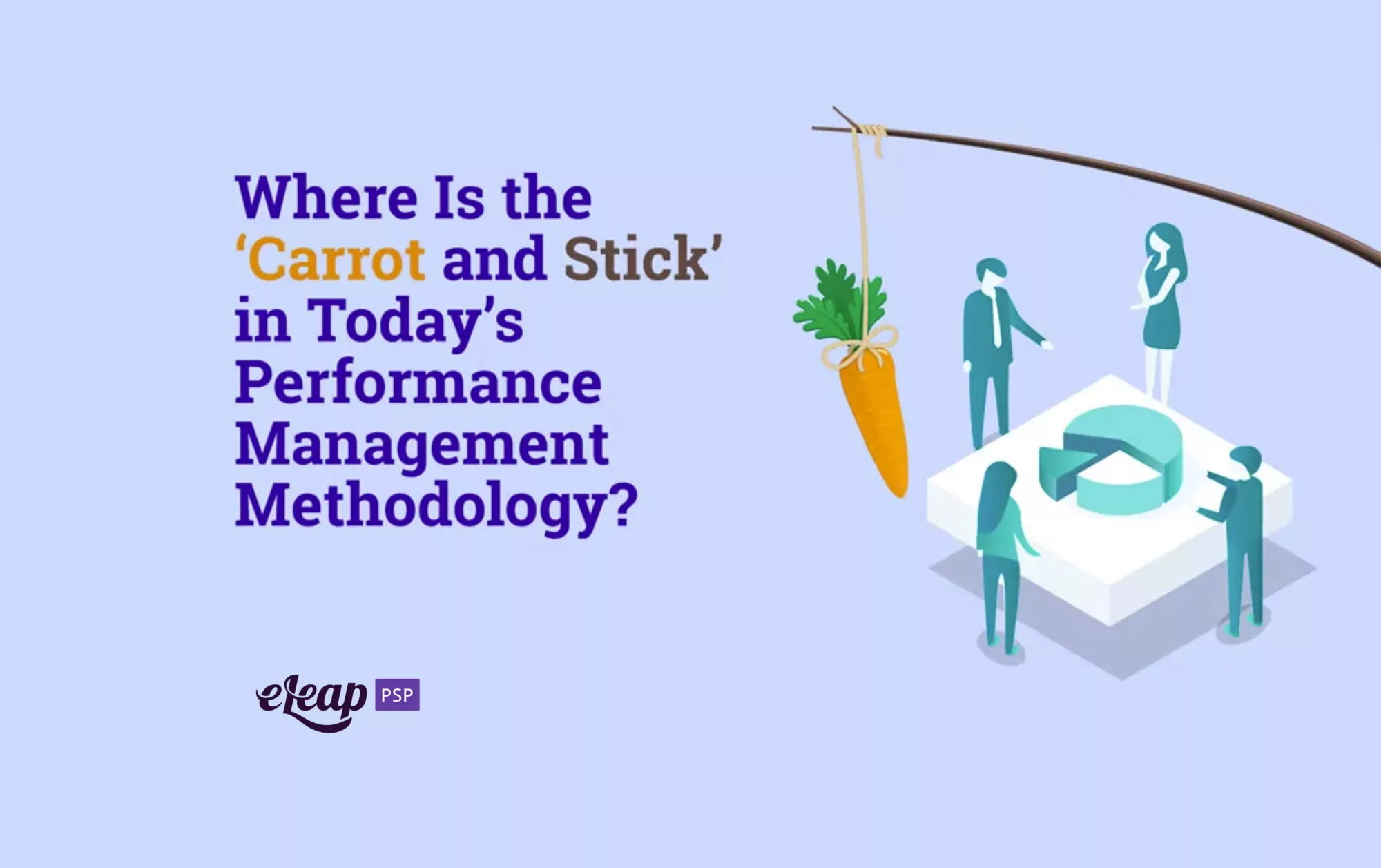Where Is the ‘Carrot and Stick’ in Today’s Performance Management Methodology?

How do you get employees to do their jobs? How do you encourage a worker to hit key goals and objectives? How do you ensure that your team is motivated to push harder and achieve more? In the past, this involved what’s called the “carrot and stick” approach.

- Carrot – The carrot was a reward that the employee wanted or valued. It might have been a bonus, a little more paid time off, or something else, but it was usually monetary and, most often, a raise given after a formal performance review.
- Stick – The stick was the other part of the equation, a punitive measure designed to spur performance and motivation even if the reward was not enough to keep a team moving forward.
The analogy puts the employee in the position of a horse. The rider dangles a carrot in front of the horse’s nose. Seeing the carrot, the employee pushes forward, trying to reach it. On the other hand, the rider holds a stick. If the horse loses interest in the carrot or realizes that despite the forward momentum, the carrot is not getting any closer, the stick is used. Pain then motivates the horse to move forward.
This process – reward on the one hand and punitive measures on the other – was the primary way that employees were motivated to improve their performance once a time. “Do this, and you’ll receive this delicious carrot! Don’t do it, and you’ll be sorry,” was the mindset.
Thankfully, things are changing today. Modern performance management bears little resemblance to what has gone before. Today’s managers, decision-makers, and business owners are urged to discard the carrot-and-stick mentality completely. Throw it away. How does it motivate if managers and leaders do not use the carrot and stick method, though?
Getting to Know One Another
As mentioned by Vincent Tsui, writing for Harvard Business Reviews, “Motivating employees seems like it should be easy. And it is – in theory. But while the concept of motivation may be straightforward, motivating employees in real-life situations is far more challenging. As leaders, we’re asked to understand what motivates each individual on our team and manage them accordingly.”
This requires that leaders go beyond the carrot for motivation and stick to consequences or punitive action. It boils down to getting to know your employees or team members and then delivering motivation that matters to them. Stop dangling a carrot in front of them when you know they rarely reach it or threaten painful consequences and start providing something that each employee values.
While this may involve rewards of some type, it may surprise some leaders to learn that most employees can be motivated not with concrete rewards, more money, or something similar but with something less tangible.
Writing for Jostle, Danielle Wallace explains, “Both of these [incentivization and punishment] approaches have drawbacks. They often don’t trigger the true motivator of an individual but plan on their desire (carrot) and fear (stick). This can lead to a myriad of issues, and often the motivation method is not sustainable. Thankfully, there are other ways you can motivate a team.”
Finding the True Motivator
To transform your teams, you need to find a way to get employees to change their mindset. Some of the most common mindsets today include:
- I was looking for a job when I found this one. (Implying they are fine if they lose it as they’re still searching for the “right” place.)
- I’m in this job because I have no other option. (Implying they’re working in the business because nothing better is available.)
- This job is better than not having one. (Implying they need employment and the current position offers a paycheck but little more.)
The challenge is shifting those mindsets to one of positivity, taking apathy and transforming it into “I love my job.” How, though? Again, it comes down to mindset. As long as leadership has the mindset that the carrot and stick method will work, it’s impossible to change employee mindsets. One hinge on the other. We’re all interdependent.
For decision-makers and leaders, the change in mindset is one from getting employees to do great work (hitting targets, reaching goals, achieving KPIs) to one of feeling great about their work. What’s the difference? It’s simple but pretty stark when you delve down into it.
Focus on Value – One key is to make people feel valued in their position and for what they bring to the organization. If you can make your team members feel valued, they’ll stick around for the long term. They’ll also work harder and longer and deliver better performance than anything possible with the carrot-and-stick method.
So, how do you show that you value your team? You invest in them. You provide them with the means to improve themselves professionally and personally. This will require you to create a culture of learning within your organization, which often requires a top-down shift. Be careful if your leadership team isn’t on board with learning and development; that mindset can become contagious. In contrast, a leadership team committed to professional and personal development will ensure that everyone else is on board, too.
Recognize Contributions and Relevance – Another way to ensure that your team members are engaged and love their jobs is to recognize their contributions. When someone is praised for doing a good job, they’re more likely to do a better job in the future. In contrast, being censured for failing to reach what often seems like an arbitrary goal engenders no goodwill. Instead, it breeds resentment and apathy.
Take the time to recognize what your team members do and their relevance to the team and the organization. They must feel like they are an integral part of the whole, not some replaceable cog that will simply be tossed out when it wears down.
Conclusion
The carrot and stick method has little place, if any, within today’s organizations. The modern performance management mindset encourages, recognizes, and creates a culture of learning to improve team performance and talent retention. Try the eLeaP system for free for 30 days to learn how to improve team performance.